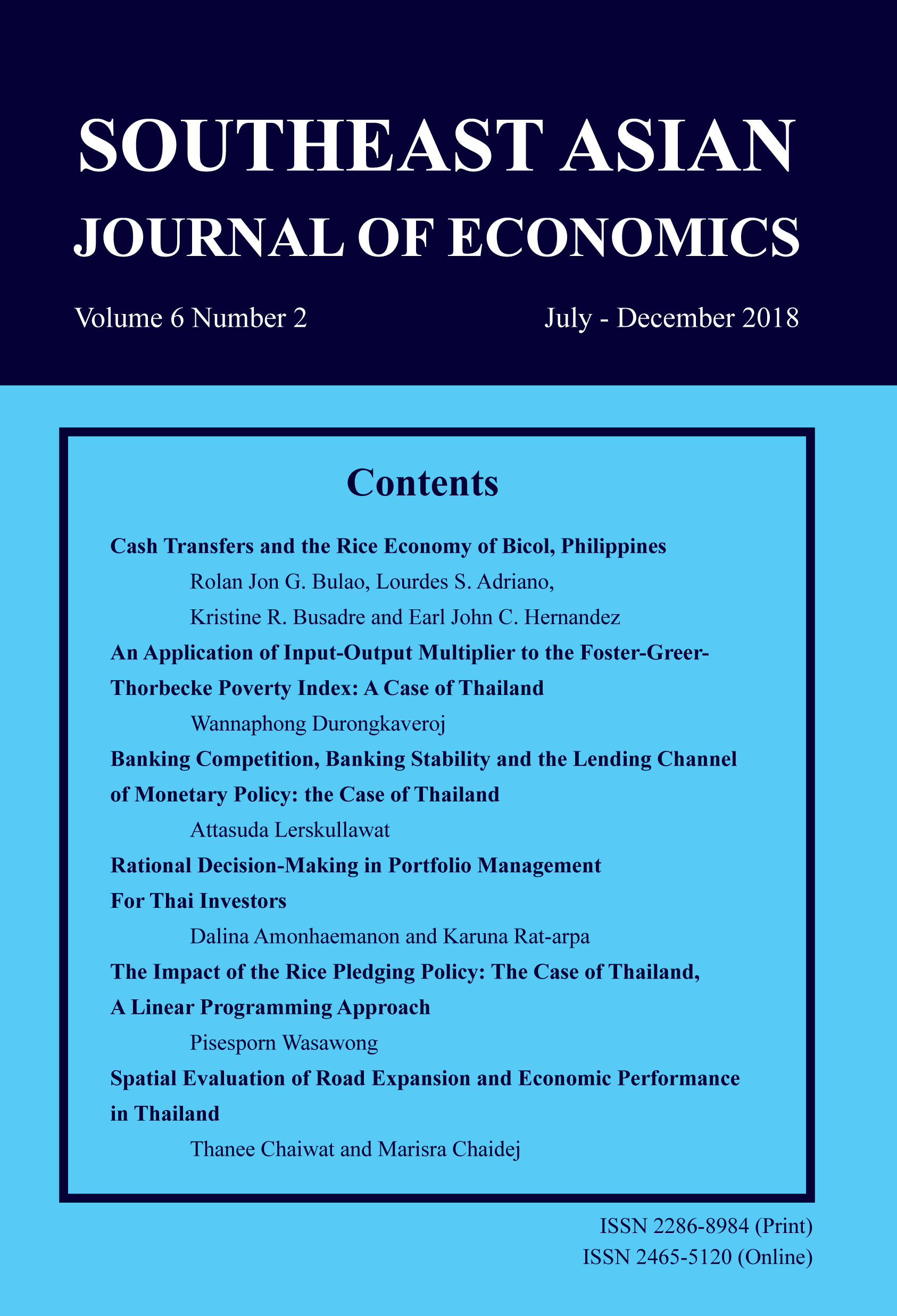Risk Management Strategy for Agricultural Production Instability: A Case Study of Paddy Production
Keywords:
Laos, Risk Management, Floods and Paddy FarmAbstract
While Laos faces more intensive rainfall, frequent severe floods and run-offs from the Mekong river basin, its agriculture sector is likely to be increasingly vulnerable to floods leading to instability of agricultural production especially paddy production. As a result, the instability of agricultural production will affect the Economic Vulnerability Index (EVI) which is regarded as one of the criteria for leaving Laos out from the list of Least Development Countries (LDCs). Therefore, this research seeks to identify the most effective risk management strategies for farmers against floods on paddy farms in the wet season as a case study in order to stabilize the agricultural production from natural disasters and to improve the Economic Vulnerability Index (EVI) of Laos. Data from 369 farming households were collected in vulnerable locations (flood-prone areas) and quantitative analysis via ordinary least square (OLS) estimation was used. The results indicate that calendar adjustment is the only strategy that is able to reduce the risk from floods. Therefore, calendar adjustment should be encouraged. Also, this study suggests that more attention needs to be paid to improving the water or flood control systems such as drainage and embankments in flood prone areas. Lastly, it should be aware that the use of anti-flooded seeds should be depended very much to the nature of floods.
Downloads
Published
How to Cite
Issue
Section
License
Copyright (c) 2016 SOUTHEAST ASIAN JOURNAL OF ECONOMICS

This work is licensed under a Creative Commons Attribution-NonCommercial-NoDerivatives 4.0 International License.
The submission of a manuscript implies that the paper is an original work and has not been published elsewhere. The author(s) authorize the journal to reproduce or distribute the paper in printed or other electronic forms.







